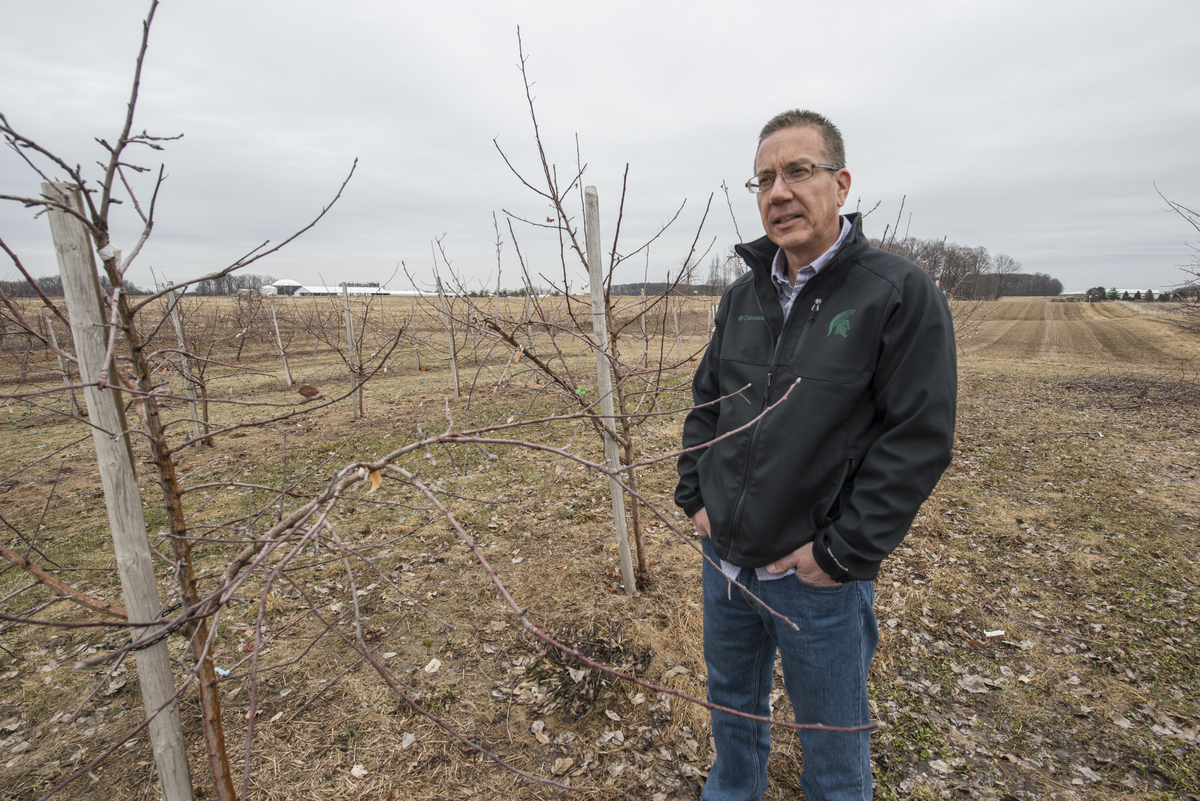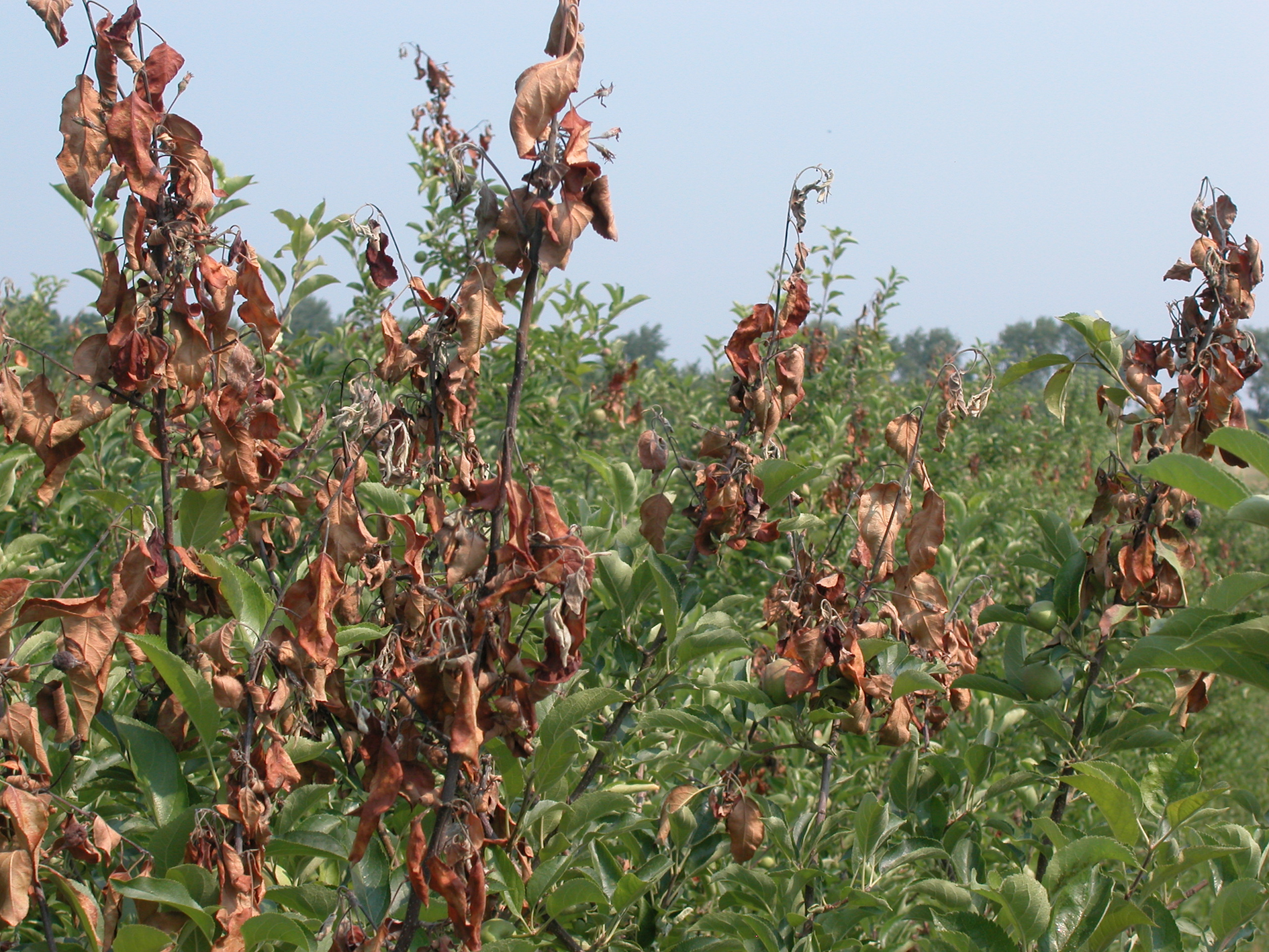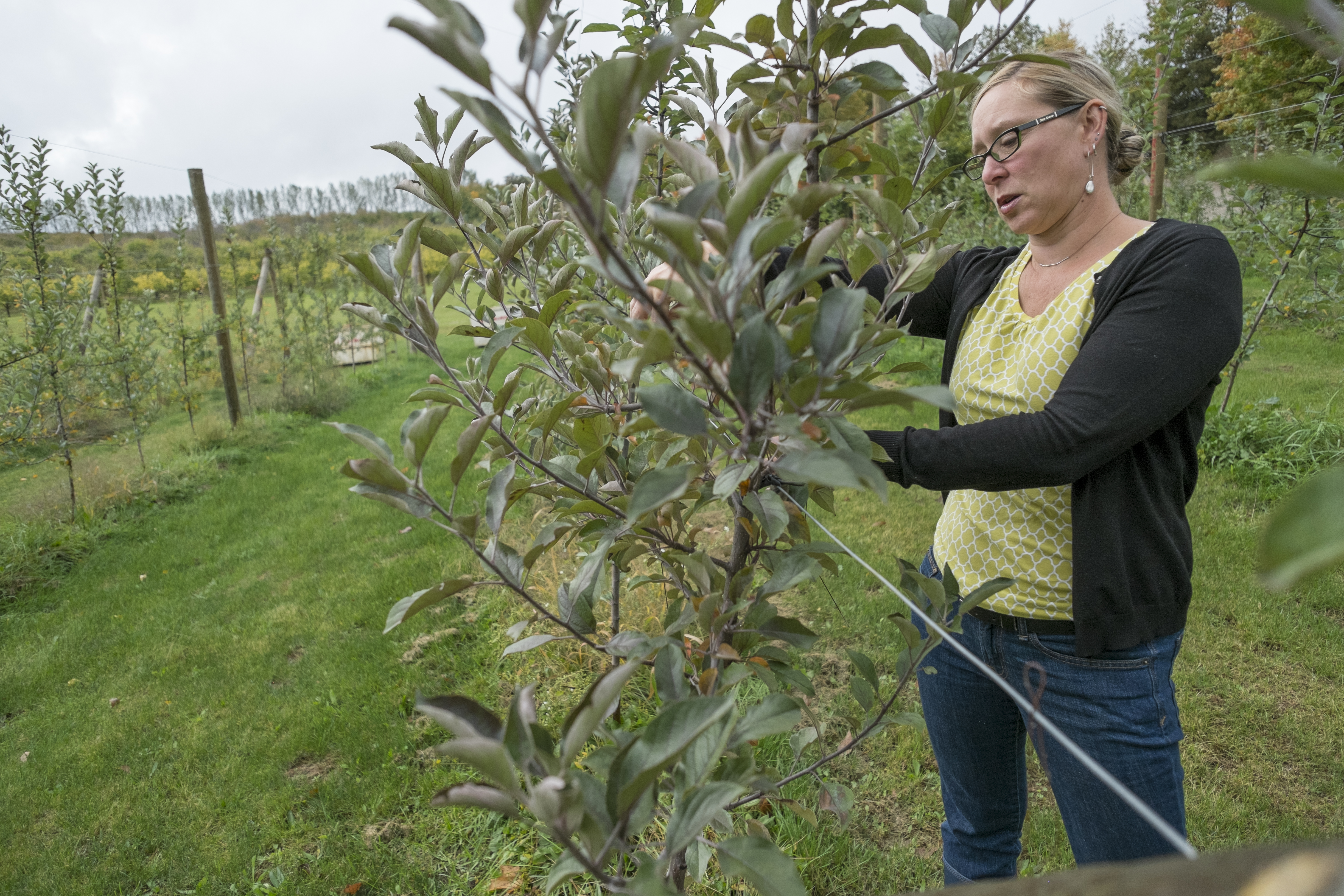Michigan State University researchers lead $5.2 million grant to investigate management strategies for fire blight
George Sundin and Nikki Rothwell will lead a USDA-funded project examining fire blight, a disease that can kill apple and pear trees.

George Sundin, professor and Extension Specialist in the Michigan State University (MSU) Department of Plant, Soil, and Microbial Sciences, and Nikki Rothwell, director of MSU’s Northwest Michigan Horticulture Research Center, have been awarded a $5.2 million grant from the U.S. Department of Agriculture National Institute of Food and Agriculture (USDA NIFA) to research control methods for fire blight, a bacterial disease that can hinder crop yields and kill apple and pear trees.
The four-year project, “Comprehensive Fire Blight Management for the United States,” will begin in fall 2020. The project also includes researchers from the University of Illinois, University of California-Riverside, Cornell University, Washington State University, North Carolina State University, and Oregon State University. Together, the states in which these institutions are located represent 89% of apple production and 100% of pear production in the United States.
A board of apple growers throughout the country, including two from Michigan, will serve as advisors on the project.
“This grant is an applied, nationwide grant, so the goals and potential outcomes for growers are fairly immediate,” Sundin said. “We want to do the work and be able to almost immediately use our Extension programs to get this out to growers.”
“This work has the potential to add more tools to the growers’ toolbox, and many of the research outcomes can be turned into recommendations that can be implemented on-farm in the next three to five years,” Rothwell said.
Named because it makes branches appear like they’ve been burned in a fire, fire blight is a critical problem for U.S. apple production.

“When you're growing trees, that's a perennial crop. You need those trees growing year after year,” Sundin said. “If trees die and the grower has to pull them out, say 10% of the trees in one growing area, those kind of gaps in the orchard cause big issues for production, and replacing trees is difficult and costly. We've seen situations where hundreds, or even thousands, of trees in small growing areas are killed by fire blight.”
Sundin, Rothwell and their team will learn how resistance inducers — chemical and biological substances that enhance a plant’s ability to fight off a pathogen —can be used to manage fire blight.
“Resistance induction is a process that plants innately have. If one branch of a tree gets attacked by a pathogen, it sends a message to the other branches so that they would be induced to fight off infection,” Sundin said. “The problem is when the fire blight pathogen attacks, the pathogen itself will suppress that resistance response. That’s why we need to induce it so that it's already up and running when the pathogen arrives.”
The team will identify resistance-associated genes in apples and how the degree of induction varies based on cultivar and environmental factors. Once they have a better understanding of genes associated with resistance, site-specific recommendations can be provided for orchards with different varieties and growing conditions.
“Ultimately, we'll be able to tell growers under which conditions they should or shouldn’t use resistance inducers so that they can get better precision in their control procedures,” Sundin said.
Sundin is also examining breeding as part of this research. Fire blight resistance genes currently exist, primarily in crabapple-type hosts used more for landscaping than eating. One team goal is to breed popular varieties of apples with crabapples so that they still have traits that consumers desire, but also increased resistance and reduced sensitivity to fire blight.
“The best way to control any disease is by breeding, where the host has built-in disease resistance,” he said. “It takes decades to breed good apple varieties that consumers are going to like, and there aren’t any with fire blight resistance now.”

Sundin and Rothwell said they hope to generate pre-breeding lines, which would be released to existing breeders as a source of fruit quality and resistance to improve upon.
“It’s our hope that within the next 10-15 years, we could have commercially available apples with really excellent fruit quality combined with fire blight resistance,” Sundin said.
Both researchers are excited to collaborate with other scientists, growers and Extension specialists.
“I think what we're already doing in Michigan and regionally is very important,” Sundin said. “These funds and world class team will take our research and outreach programming up another couple notches— that will only benefit U.S. apple producers.”
“The best part of my job is conducting meaningful research that directly impacts growers. Nothing is more satisfying than seeing growers produce beautiful apples with the help of our research results and outreach programming,” Rothwell said. This grant is going to give us an opportunity to keep apple farming healthy across the U.S.”



 Print
Print Email
Email




